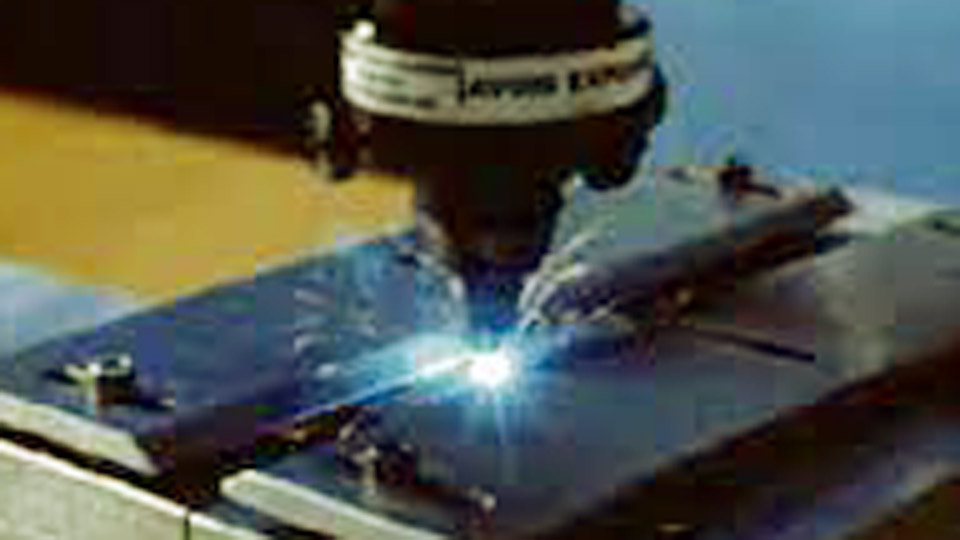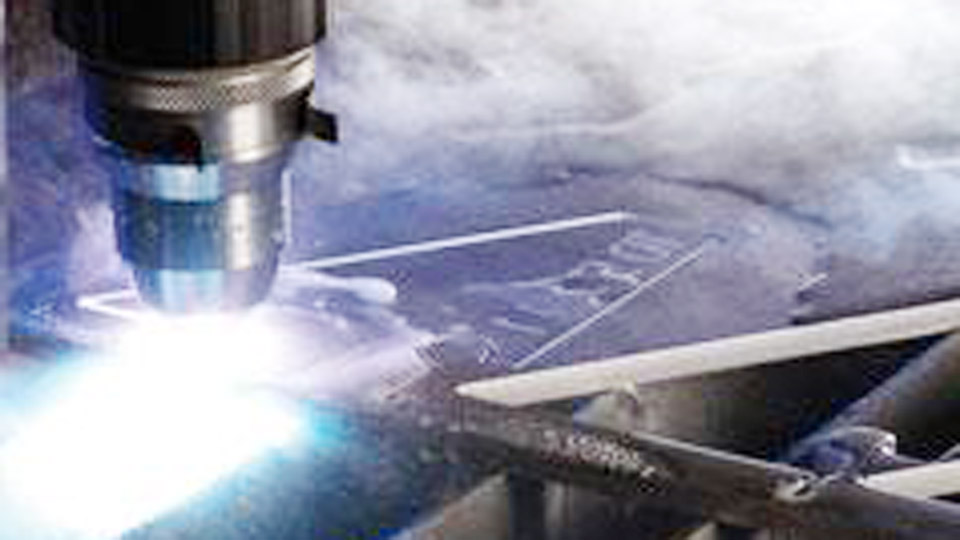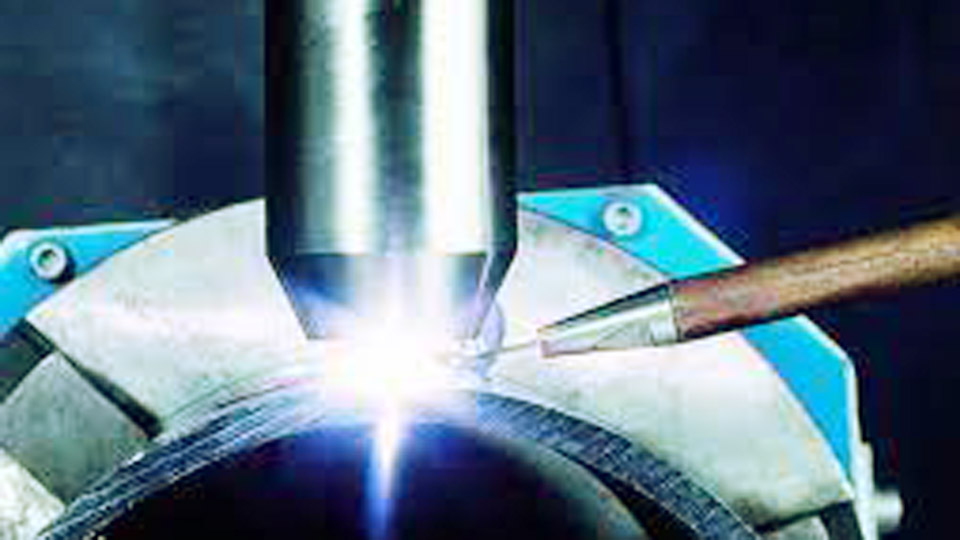I’ve worked with a wide range of welding techniques over the years, and I’ll be honest — plasma arc welding (PAW) is a pretty fascinating process. It’s precise, powerful, and incredibly advanced. When I first used plasma arc welding,

Image by ahssinsights
I thought to myself, “Why don’t we use this for everything?” After spending more time with it, digging into the tools, the setup, and the real-world challenges, I quickly realized that PAW isn’t always the perfect solution.
That’s what I want to share with you today. Why something so efficient and technically superior isn’t the go-to welding method for every job out there. If you’re a curious beginner or someone deep in the welding world like me, I’ll break this down so it’s easy to understand. Let’s explore the strengths, the limits, and the real reasons why plasma arc welding isn’t used for everything.
Understanding the Plasma Arc Welding
Before I get into the why-not part, let me explain a bit about what plasma arc welding actually is. Plasma arc welding is a process that uses a superheated jet of plasma — that’s an electrically charged gas — to melt and fuse metals.
It’s similar to TIG welding in many ways, but with higher energy density, better control, and the ability to cut or weld through thick and thin materials with high precision.
The torch has a constricted nozzle that shapes the arc into a fine jet, which is perfect for narrow, deep welds. It’s used in aerospace, medical device manufacturing, and any place where high-quality, flawless welds are required.
It sounds amazing, right? And it truly is — but just like any tool, it has its place and its limitations.
The Cost Factor: Equipment and Maintenance
One of the biggest reasons plasma arc welding isn’t used everywhere is the cost. The setup is significantly more expensive compared to other common welding methods like MIG or stick welding.
We’re talking about highly specialized torches, power supplies, and control systems that don’t come cheap.
Even once you’ve got the system up and running, maintenance isn’t simple. The components inside the torch, like the electrode and nozzle, wear out faster because of the extreme heat and precision required. So you end up replacing parts regularly, and that adds up over time.
Let me show you a quick comparison:
| Welding Method | Equipment Cost | Maintenance Complexity | Typical Usage |
|---|---|---|---|
| Stick Welding | Low | Simple | Construction, repair |
| MIG Welding | Moderate | Simple to moderate | Fabrication, automotive |
| TIG Welding | High | Moderate to complex | Aerospace, piping, precision jobs |
| Plasma Arc Welding | Very High | Complex | Aerospace, medical, fine welding |
So, unless you’re working in an industry that absolutely needs the precision PAW offers, it often doesn’t make financial sense.
Complexity in Operation
I’ve trained quite a few welders over the years, and most of them find stick or MIG welding fairly approachable. Plasma arc welding, on the other hand, isn’t that beginner-friendly.
It’s technically demanding and requires a solid understanding of how the torch works, how to control the arc, and how different metals react under high temperatures.
You can’t just pick up a PAW torch and expect to make a clean weld. It requires a trained operator, often with advanced certifications.
In industries like aerospace or medical manufacturing, that’s okay — they have the resources for that. But in general construction or smaller shops, it’s often overkill.
And if you make a mistake with PAW? It’s not forgiving. A slight movement or incorrect setting can easily damage the workpiece or create defects that are hard to detect but critical in structural applications.
Not Suitable for All Materials
One common misconception is that plasma arc welding can handle any metal. That’s not exactly true.
While it’s great for stainless steel, titanium, and nickel alloys, it struggles with some aluminum alloys and certain reactive metals.
Also, metals that are too thin can be challenging because the intense heat of the plasma jet might cause warping or burn-through.
So if you’re working on low-carbon steel or other general materials, you’ll often get better results — and fewer headaches — from TIG or MIG.
Slower Than Other High-Speed Methods
Plasma arc welding is known for its precision, but not necessarily its speed. In high-volume environments where speed is crucial — think auto manufacturing or large-scale metal fabrication — it’s not always the best choice.
MIG welding or robotic laser welding can cover large areas much faster. That’s one of the reasons industries that focus on mass production often avoid PAW.
Speed matters, and although PAW produces beautiful welds, the pace can slow down the workflow when volume is more important than perfect appearance or microscopic integrity.
Size and Portability Limitations
Here’s something I didn’t fully appreciate until I tried to take a PAW unit on-site: these machines are not very portable. Unlike a small MIG welder or a basic stick welding setup you can toss in the back of your truck, plasma arc welding machines are bulky and sensitive.
They’re built for shop environments where conditions are controlled, power is stable, and the machine can stay put. That’s great in a lab or factory, but not so great if you’re working on a bridge or repairing farm equipment out in the field.
If you’re a mobile welder or part of a team working in remote locations, you simply won’t bring a plasma arc welder along. It’s not practical.
High Shielding Gas Requirements
Another downside I’ve noticed is the demand for high-purity shielding gases. You can’t just grab a tank of argon or CO2 and get started. PAW often requires specialty gas mixtures and high flow rates, which means more storage, more refills, and more cost.
These gases also need to be handled properly, which adds another layer of safety training and regulation. For small shops or hobby welders, this becomes a hassle quickly. In fact, managing the gas system can become more complex than running the welder itself.
High Heat Input and Risk of Material Distortion
The concentrated arc of plasma welding produces a lot of heat. That’s what makes it so powerful, but it also means there’s a higher risk of thermal distortion. On thinner metals, the heat can cause warping or burn-through.
You need tight control over the arc, travel speed, and cooling — and even then, some materials just won’t cooperate. This limits its use in structural jobs or sheet metal projects where shape and alignment are critical.
Overkill for Simple Jobs
There were times when I used plasma arc welding just to see what it could do on simple parts. And honestly? It was complete overkill.
If all you’re doing is building a gate frame or patching a piece of pipe, there’s no need for that level of precision and control. You can do it quicker, cheaper, and with less hassle using MIG or stick welding.
That’s why plasma arc welding tends to be reserved for jobs that absolutely require tight tolerances and ultra-clean welds — like in jet engines or medical implants. For everything else, it’s often just not worth the effort.
Safety Considerations and PPE Requirements
Welding is never completely risk-free, but plasma arc welding comes with its own set of safety challenges. Because the arc is so hot and focused, there’s a greater risk of burns, electric shock, and radiation exposure.
The PPE requirements are more intense — special gloves, helmets with higher shade ratings, and even protective shields for nearby workers. That’s manageable in a controlled environment, but harder to maintain in a busy or open-air jobsite.
Also, the gases used can be dangerous if not handled properly, and a small mistake in setup or operation can cause serious harm.
Environmental and Power Demands
Plasma arc welding demands a clean, controlled environment to operate efficiently. Dust, wind, humidity — all of these can mess with the arc stability and shielding gas coverage. In outdoor or rough industrial settings, this becomes a major problem.
It also pulls a lot of power. You need a strong, stable power supply, often with backup or regulated flow. For many shops, especially those in rural or older buildings, this means expensive upgrades or system limitations.
So when you step back and look at it all, you start to understand why plasma arc welding isn’t everywhere.
Conclusion
Plasma arc welding is a remarkable technology. I love how precise it is and how it can create welds that almost look like artwork. In industries that need absolute perfection — like aerospace, electronics, or medical tools — PAW is unmatched.
But here’s the truth: it’s not a one-size-fits-all solution.
It’s expensive to set up and maintain. It requires a skilled operator. It can’t handle every material. It’s not portable, not fast for mass production, and not forgiving to beginners.
For many everyday welding tasks, it’s simply too much.
That’s why most welders — even pros like me — turn to other methods for most jobs. Plasma arc welding is a specialty tool. It’s a superhero in the right situation, but not the kind you bring in for every little job.
If you’re thinking about exploring PAW, I say go for it — just be sure you understand what it’s best for and where its limits lie.
Frequently Asked Questions
Why is plasma arc welding not commonly used in construction?
Plasma arc welding is expensive, requires precise conditions, and is slower than other methods, making it less suitable for fast-paced, cost-sensitive construction environments.
Can plasma arc welding be used on aluminum?
While it can be used on some aluminum alloys, it’s not always ideal due to heat sensitivity and the risk of distortion or burn-through.
Is plasma arc welding safe to use outdoors?
It’s not recommended. Plasma arc welding requires a controlled environment. Wind, moisture, and dust can affect arc stability and shielding gas coverage.
Do I need special training to use plasma arc welding?
Yes, operating a PAW machine safely and effectively requires advanced knowledge and training. It’s not beginner-friendly.
What industries benefit the most from plasma arc welding?
Aerospace, medical, electronics, and other high-precision industries benefit most because they require clean, flawless welds that PAW can provide.
Is plasma arc welding faster than MIG welding?
No, MIG welding is typically faster for general applications. PAW focuses more on precision than speed.







